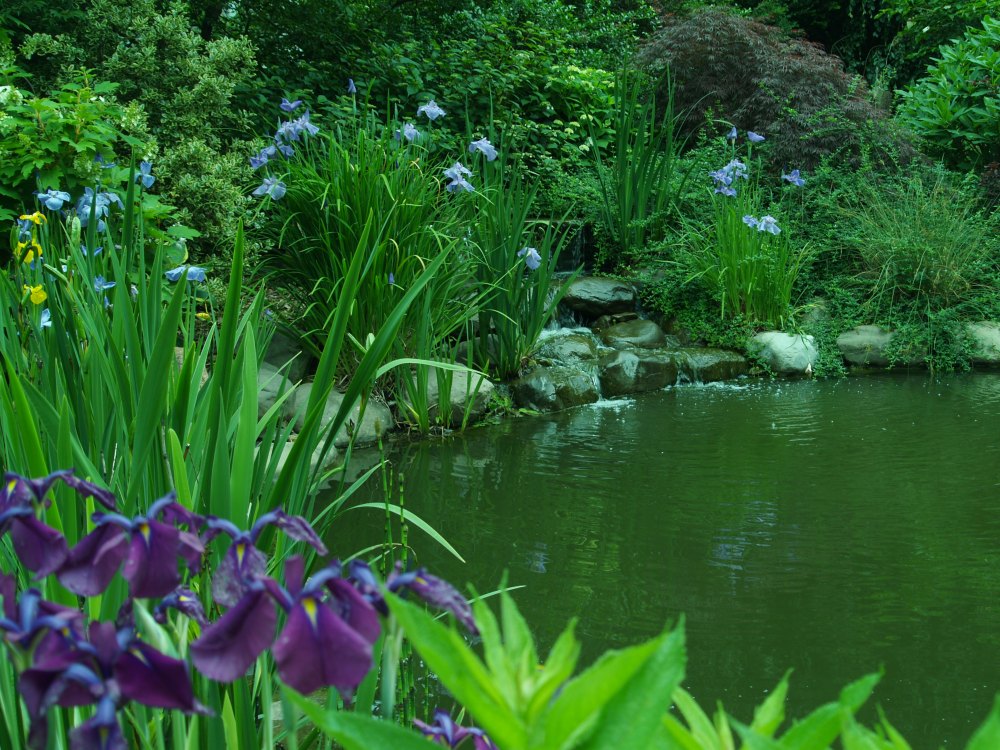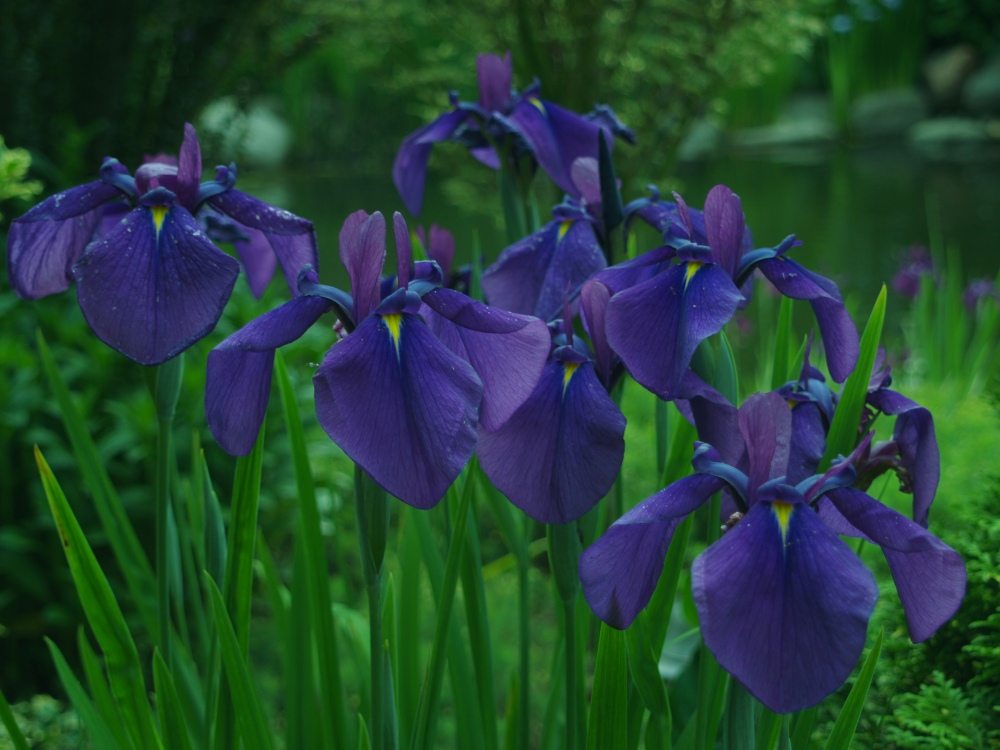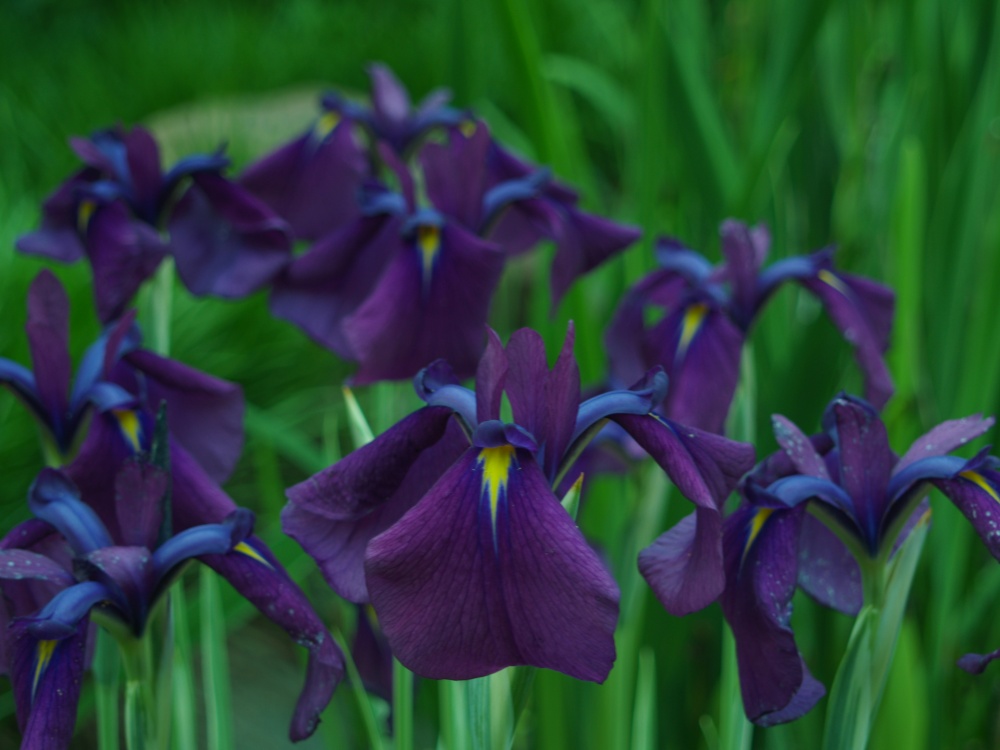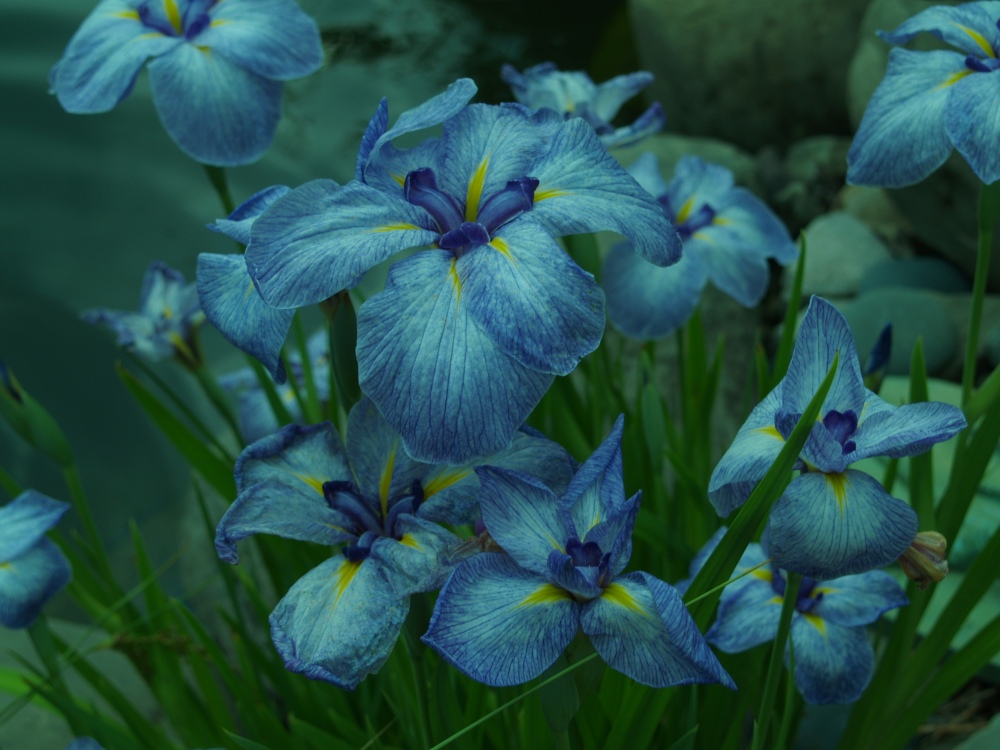This weekend I saw that one clump of Japanese iris (Iris ensata, below) close beside the waterfall of the large koi pond was dangerously crowded by overhanging branches of an exuberant Oakleaf hydrangea (Hydrangea quercifolia). On the other side of the falls a rambunctious Winter jasmine (Jasminum nudiflorum) has invaded another clump, and both shrubs required immediate attention to be certain that the irises were not overwhelmed. The pruning was accomplished without much effort, but in the future I must be vigilant to monitor the shrubs’ growth so the irises aren’t lost.
Just outside the pond, a clump of iris with large, dark purple flowers has sprouted from seed (below) between the columnar, red leafed ‘Helmond Pillar’ barberry, a low, mounding cypress, and yellow leafed seedlings of ‘Golden Jubilee’ agastache. As often happens, this accidental grouping is a superior combination to anything I’ve planned, so of course the irises will be kept, and encouraged. A year ago this iris was barely there, and I could have easily plucked it out as a weed if I was inclined to keeping the garden more tidy. Now, the challenge will be to keep the iris growing in ground that is drier than it would prefer.
In the shallow water of the pond, named cultivars (though I’ve forgotten most of the names) grow vigorously, flourishing with their roots constantly wet. Outside the pond, Japanese irises require a constantly damp soil to thrive, but wedged between small boulders and planted in only gravel in the pond the irises spread to fill as far as the boulders will allow. I’ve read that Japanese irises require only constant moisture, and dividing once every few years, but the roots of the pond’s irises are spread through gravel and under boulders so that lifting them would be troublesome, so they are likely never to be split.
The green and white variegated iris (Iris ensata ‘Variegata’, above) is the shortest growing of the cultivars, and in some years it has seemed less vigorous so that I considered pulling the clump out to divide it despite the hardship. But, as often happens, if a garden project is delayed long enough the problem is resolved by doing nothing at all, and today the variegated iris appears to be in perfect health. The dark purple flowers are splashed with a slight streak of yellow, and in scale with the shorter foliage, the blooms are smaller than other varieties.
‘Lion King’ (above) is the latest flowering of the irises in the pond, and it seems to be the least vigorous with the clump barely increasing over several years. The flowers are quite marvelous, but I wonder if the sturdiness of other Japanese irises was left out in the breeding process. But, it survives, and I look forward to the blooms that arrive just as other varieties are fading the third week of June.
From start to last bloom Japanese irises flower for about a month surrounding my koi pond in mostly full sun. In prior years I planted them in damp soil with what I thought was just enough sun, with only brief success. For two years they bloomed fine, but it was clear they weren’t happy and after another year they disappeared completely. At the edges of the pond they’re planted and enjoyed with no care except to cut off the overwintered foliage in early spring before they begin to grow.
These are my absolute favorite flower. Thanks for sharing this! You have some good tips here that I will need to use for mine.
Recently, I’ve been saying that a few too many flowers are my favorite, so I probably shouldn’t admit that Japanese iris are my true favorite.
As a member of the CVIS in Richmond, Va, one of our speakers told us that ensata iris need to be dug and moved every 3 years if they are planted in a garden situation vs. at pond’s edge. She said they will decline and disappear if not moved.
I don’t doubt that Japanese iris is invigorated by dividing. I’ve seen that the same is recommended for hostas, but many of mine have not been split in twenty years. Years ago I split some to spread them about the garden, but not recently and they don’t seem bothered by being left alone. I’ve seen perennials that weaken in the center when they become too rootbound, but most will suffer through without a complaint.